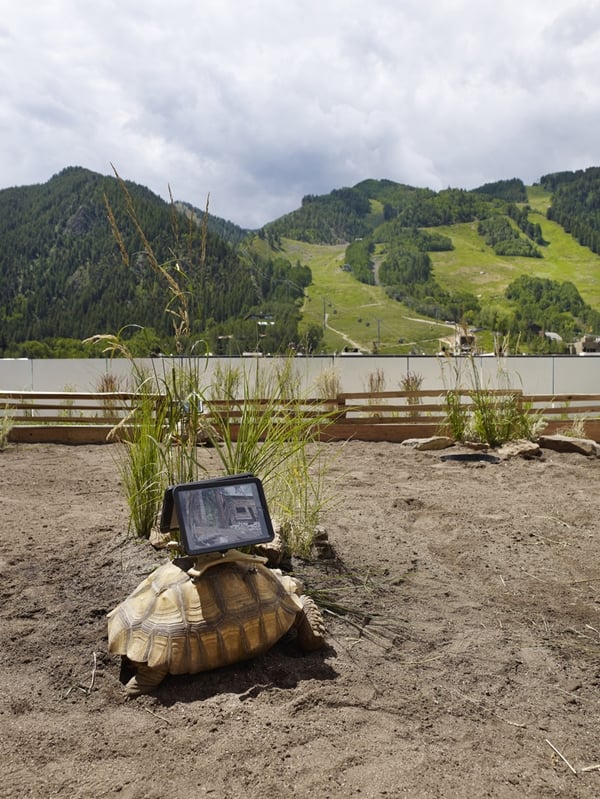
Photo: Tony Prikryi.
The Aspen Art Museum has removed the three African sulcata tortoises whose inclusion in Cai Guo-Qiang’s Moving Ghost Town installation sparked protests from animal lovers and rights activists earlier this month (see “Protests Surround Cai Guo-Qiang’s Tortoise Abuse at Aspen Art Museum“). Though the artwork, which involved the tortoises walking around an enclosure on the roof of the AAM’s new building with iPads mounted to their shells, was widely criticized for its treatment of the animals as museum display devices, the reason for their removal was a response to recent weather patterns, according to the museum.
“In consultation with Dr. [Elizabeth] Kremzier, and based on her expert opinion in light of the current unseasonably cold and wet weather conditions forecasted for Aspen, she is recommending that the tortoises are relocated as of today, Monday August 25th,” the museum’s board of trustees said in a statement. “To that end, the exhibition’s three tortoises—Big Bertha, Gracie Pink Star, and Whale Wanderer—will all be transitioned to a new home that was selected in consultation with and pre-approved by the Turtle Conservancy.”
The museum’s board, which previously responded with expert testimony likening Cai’s installation to the new Teenage Mutant Ninja Turtles movie (see “Aspen Art Musem Calls on Teenage Mutant Ninja Turtles“), goes on to cite the rich history of contemporary art projects involving live animals.
“We respectfully acknowledge the perspectives of those who believe that live animals should simply never be used in artworks,” the statement says, “despite the long history of artist projects that have included them—from Robert Rauschenberg and Lucinda Childs’s Spring Training (1965), a performance involving thirty desert turtles with flashlights taped to their backs; to Joseph Beuys’s I Like America and America Likes Me (1974), in which the artist caged himself with a live coyote, and Darren Bader’s presentation of live cats as sculptures in his recent Darren Bader: Images at MoMA PS1 (2012), to name but a few.”
Moving Ghost Town will remain on view through October 5, with the piece’s video component playing on the tortoise-less enclosure and a nearby monitor.